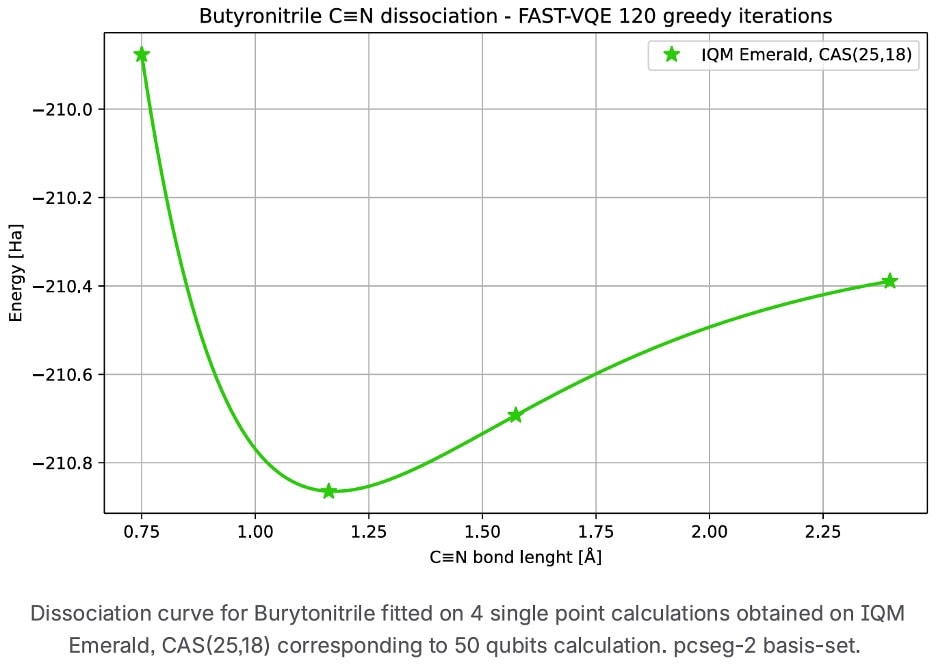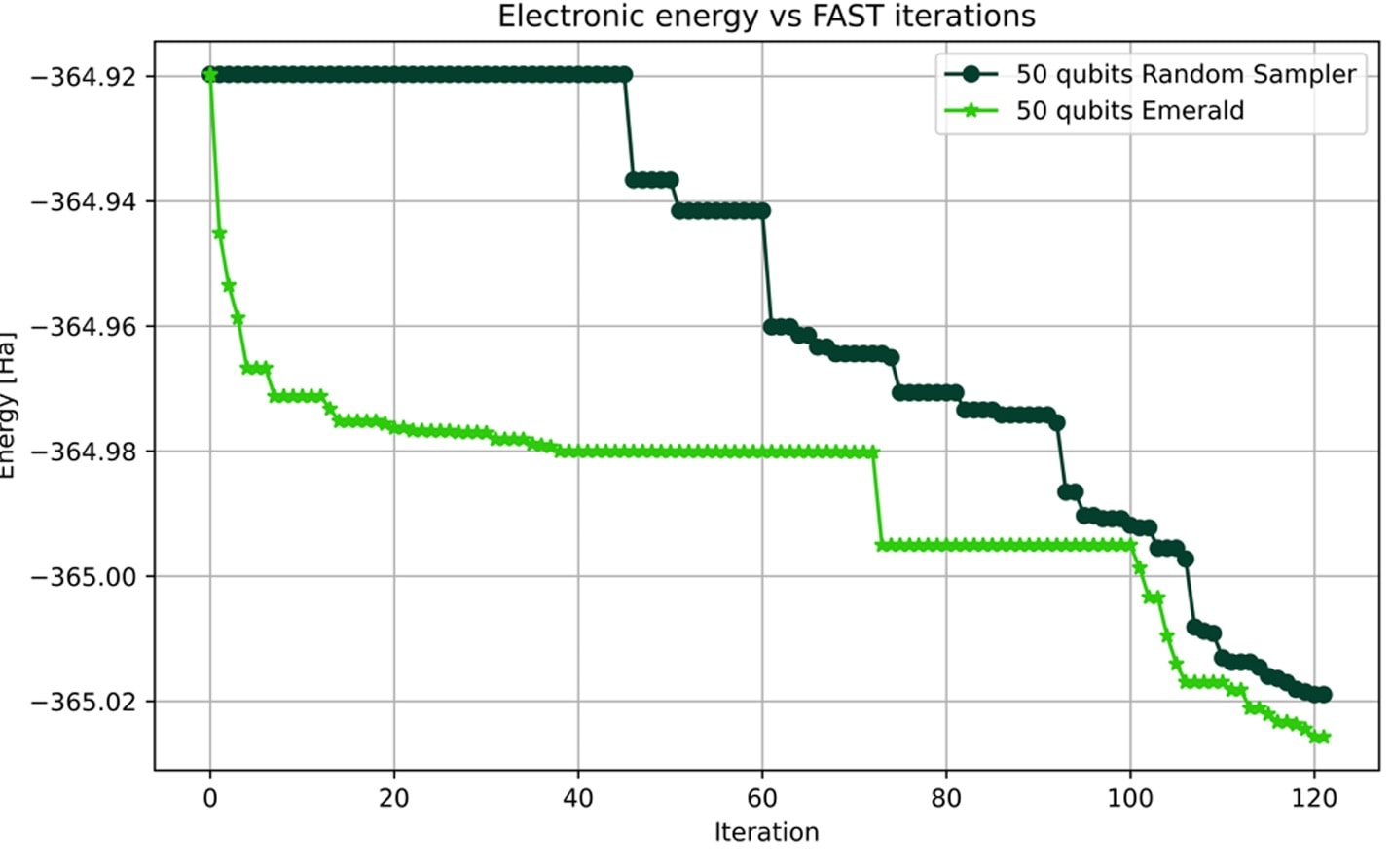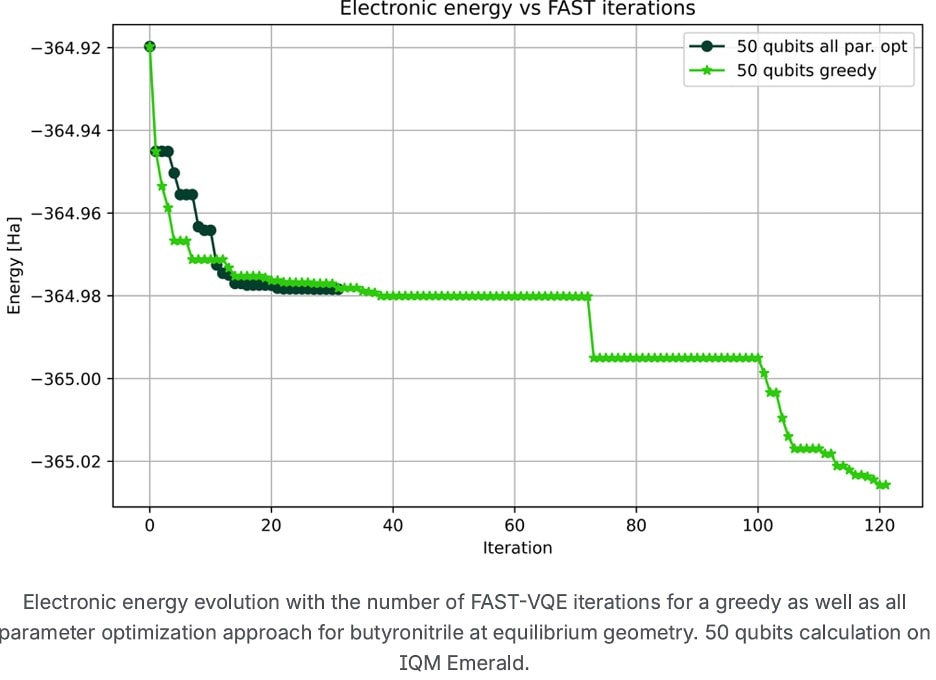Quantum computers are reaching a scale where meaningful chemistry problems can start to be explored. Kvantify Qrunch facilitates that by providing a flexible suit of scalable quantum chemistry methods. Leveraging that to run the FAST Variational Quantum Eigensolver (FAST-VQE) algorithm on 50 qubits on IQM Emerald is a step that goes beyond proof-of-concept studies and begins to approach calculations that are difficult for classical computers to simulate directly. At this size, the Hilbert space is so large that exact classical simulation becomes impractical, placing such calculations outside the reach of classical methods.

This makes it possible for researchers to model chemically relevant systems rather than only small toy problems, while also providing a practical test of how noise, algorithm design, and classical optimization bottlenecks behave at larger scales. Demonstrating that FAST-VQE can run on 50 qubits shows that quantum hardware is starting to capture structure and deliver insights that smaller-scale emulation cannot, even as challenges in scaling and accuracy remain.
With IQM Emerald, Kvantify has tested its chemistry-optimized technology on 50 qubits, demonstrating how the software platform seamlessly adapts to the latest hardware technologies.
Earlier this year, Kvantify used IQM’s processors for 16- and 20-qubit calculations of the butyronitrile dissociation reaction. With the release of IQM Emerald, one of the most powerful commercially available quantum computers with more than 50 qubits, Kvantify’s team was able to test Qrunch at a much larger scale.
IQM Emerald more than doubles the quantum resources applied in Kvantify’s previous studies, making it possible to handle active spaces that classical approaches can no longer simulate efficiently.
At the core of Kvantify’s work is its FAST-VQE algorithm, designed for scalability. Unlike ADAPT-VQE, which requires a steep increase in circuits as systems grow, FAST-VQE maintains a constant circuit count. This makes it suitable for large chemical problems.

Key aspects:
A central question is whether noisy quantum hardware provides advantages over random approaches. On IQM Emerald, Kvantify compared FAST-VQE results with random gate selection. The quantum hardware consistently achieved faster convergence, even with noise and deep circuits. This shows that today’s devices can capture structure and patterns that randomness cannot. Particularly the initial operator selections are important for narrowing down the computational space and speeding up convergence, while for the larger circuits at later stages, the effect of noise starts to impede optimal operator selection.

The dissociation curve of butyronitrile was computed on 50 qubits with Emerald and Kvantify Qrunch. Here’s what they found:
These results highlight a shift: as hardware grows, the classical side increasingly limits progress, not the quantum execution.

By scaling up to 50 qubits, Kvantify has demonstrated that quantum hardware is already enabling chemically relevant simulations that challenge classical tools. While significant challenges remain, these results show that:
IQM Emerald has provided the scale needed to explore these problems meaningfully. These studies illustrate how researchers can already leverage today’s quantum computers for applications in quantum chemistry that were out of reach just a year ago.
Kvantify Qrunch is now available. Reach out to Stig Elkjær Rasmussen (ser@kvantify.dk) for more information.

Emilia Stuart is a content strategist and storyteller at IQM Quantum Computers, specializing in translating complex quantum computing concepts into engaging narratives. With a background in research and tech marketing, she understands potential customers and crafts stories that resonate. Emilia’s passion is making intricate technologies accessible to diverse audiences.
Search faster—hit Enter instead of clicking.